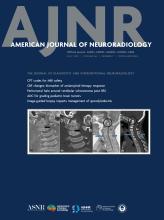Case of the Month
Section Editor: Nicholas Stence, MD
Children's Hospital Colorado, Aurora, CO
FEBRUARY 2012
Next Case of the Month coming March 6...
Medulloblastoma (Desmoplastic Variant)
- Medulloblastoma (MB) occurs predominantly in the pediatric population (20% of pediatric CNS tumors and less than 3% of adult CNS tumors). Peak incidence: ages of 5 and 9, 70% before 20.
- In addition to classic medulloblastoma (CMB), there are four histologic MB variants, the most common of which is desmoplastic medulloblastoma (DMB). DMB is more common in young adults and is associated with a more favorable prognosis than CMB, especially in children.
- Clinical features: Signs and symptoms of increased intracranial pressure and cerebellar dysfunction.
- Key Diagnostic Features: Pediatric MB is hyperdense on CT, demonstrating diffusion restriction. Typically located in the cerebellar vermis, it can compress the fourth ventricle, leading to non-communicating hydrocephalus. Moderate degree of enhancement is often seen. Subarachnoid seeding can occur. MB in young adults, DM variant tends to be more aggressive, less well-defined lesions, with either reduced or absent enhancement. The lesion is often more eccentric or hemispheric. Cysts and necrosis are more common. Occasionally, especially in children, the DMB demonstrates moderate enhancement. Rarely, DMB may arise in extra-axial locations, especially the cerebellopontine angle.
- DDx: Meningioma, lymphoma, ependymoma, granulocytic sarcoma
- Rx: Maximal surgical resection, with adjuvant radiotherapy to tumor site and neuroaxis, in addition to systemic chemotherapy











